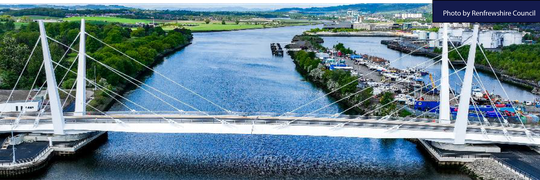Active Travel Monitoring – Canal & River Trust
The Canal & River Trust (CRT) is a registered charity caring for 3,219km of working canals and river navigations, docks and reservoirs across England and Wales. The Trust works in partnership with others to support the health and wellbeing of million
The Canal & River Trust (CRT) is a registered charity caring for 3,219km of working canals and river navigations, docks and reservoirs across England and Wales. The Trust works in partnership with others to support the health and wellbeing of millions of people. The Trust acknowledges that it should demonstrate its impact through evidence, to prove and validate the difference it is making.
To demonstrate its’ impact through evidence, the Trust has designed an Outcomes Measurement Framework (OMF) launched in September 2017. It has selected sixteen longitudinal study areas which focus on in-depth measurement and evaluation and has identified a need to carry out in each of these study areas towpath use research, utilising intercept surveys and a method of capturing towpath usage levels accurately and continuously over an extended period of years.
The Trust understands from previous experience the limitations and inaccuracies of traditional pedestrian and cycle counting techniques, particularly in challenging towpath environments and hence sought a solution for reliable, long-term accurate monitoring which is compliant with data protection.
CRT also required a methodology to illustrate how air quality at the canal side compares with equivalent roadside locations to help promote the concept of wellbeing in the use of its’ infrastructure.
The Traffic and Data Services Division of Tracsis has provided CRT with a Vision-Based Survey solution to the gathering of towpath user levels. Working with equipment supplied by technology partners Vivacity Labs, Tracsis have identified suitable sites, project managed, installed and commissioned 50 vision-based sensors to provide continuous data on pedestrian and cycle user levels for the next five years whilst being compliant with GDPR regulations.
Our video helps to illustrate the process and innovative technology used by Tracsis in this ground-breaking project.
In addition, Tracsis is installing discrete environmental sensors at 12 locations which will record continuous data on air pollutants, temperature, noise and humidity to measure environmental conditions in six of 16 the longitudinal study areas.
Data from the Vision-Based Sensors at the user monitoring sites is being streamed to start building the evidence base for CRT to input into its’ Outcomes Measurement Framework.
Tracsis monitor the performance of the sites to identify any performance issues caused by power supplies or other risks.
Sample data from one of the sites is presented in the graph below.



Tracsis continues to monitor the performance and improve the accuracy of the monitoring sites. Periodically the sensing technology is upgraded to further improve the accuracy of the sensors and add new features such as determining other user classes.
As data is gathered over the first year, Tracsis will analyse and visualise the data to generate insights into towpath user patterns and characteristics which have previously not been able to be identified, relating usage patterns to events, weather and incidents and relating these to the environmental data captured at the sub-set of air quality monitoring sites.



